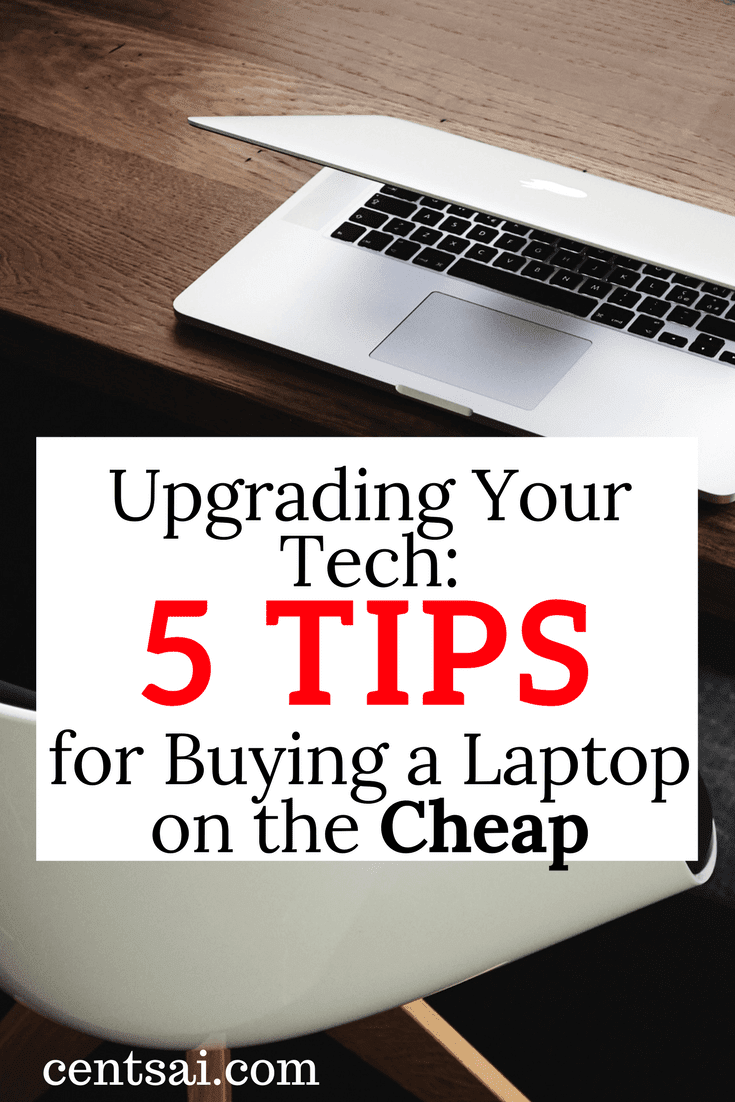
I’ve had my MacBook Air for almost five years. It’s taken a beating and is still working. But it’s becoming clear that I need to begin the process of upgrading my technology. There are a number of programs that take forever to load, and the laptop overheats easily. The end is near. And I’m dreading the cash that I may need to drop on a new system.
Fortunately, there are things you can do to keep costs down when you upgrade your digital devices.
 Here are my top tips for buying a laptop without breaking the bank:
Here are my top tips for buying a laptop without breaking the bank:
1. Simplify
Simplify your technology footprint. Do you have a laptop for $1,500, a smart phone for $500, a tablet for $100, the newest Apple Watch for $369, and Beats By Dre headphones for $300? Instead of upgrading everything, use your technology till it dies.
2. Ask About Work-Related Discounts
Before buying new technology, check with the human resources office at your job to see if there are technology discounts that you can take advantage of prior to making a purchase. I worked in education for a number of years, and we were often offered discounts on laptops and accessories. At the University of Colorado Boulder, we were entitled to a $1,200 subsidy after a few years of service.
3. Choose a Cheaper Brand
With all the major brands constantly releasing new upgrades, it's impossible to have the latest model of every device without spending a lot of money. Break up with that expensive brand that you’ve used for so long. This may seem sacrilegious to many people, but sometimes it’s good to ask yourself,
“Do I really need a $1,500 computer to do my work? Am I using it… enough… to justify the price?”
I'm currently working through a software audit to see if I actually use the many programs on my Mac. Next time around, I don’t want to pay for stuff that I don’t need.
For most people who have straightforward computing needs, a Chromebook may be a great alternative to a Mac. The original price for my Chromebook was $229, and the cost of my Mac was $1,500. I just needed to do simple things like watch videos, type reports, and save projects to “the Cloud” – and working with a cloud-based system is a much more affordable alternative.
4. Get a Warranty
If you opt for a low-end laptop (and many of them are excellent value), then I suggest you buy the warranty. I paid the extra $300 bucks on warranty, and it was worth every single dollar.
I was able to extend the life of my laptop and take care of its many problems along the way without having to spend more. My sound card is wonky, for example. I can hear people perfectly when using my computer’s audio, but if I try to participate in an online meeting, all you can hear is static. So I bought a Chromebook to help with situations in which I needed to use audio. I ended up paying around $169 (after using a gift card), and I’ve had a lot of fun learning the ins and outs of Chromebook since. This alone has saved me $1,300 which I would have otherwise spent on an upgrade.
5. Use Money-Saving Tools When Shopping Online
And to further save money, use the Honey Chrome extension whenever possible, as well as other online “coupon-clipping” tools. As you place the order, Honey will check to see if there’s a coupon code for the item that you’re buying. You can also log into your Ebates account before making your purchase and earn a small rebate in addition to any Honey savings that you receive.
The Bottom Line
Given the role that technology plays in our daily lives, the thought of your computer, cell phone, or other electronic gadget dying on you can create some anxiety. Use these strategies so that your next upgrade is painless and, most importantly, cheap.










